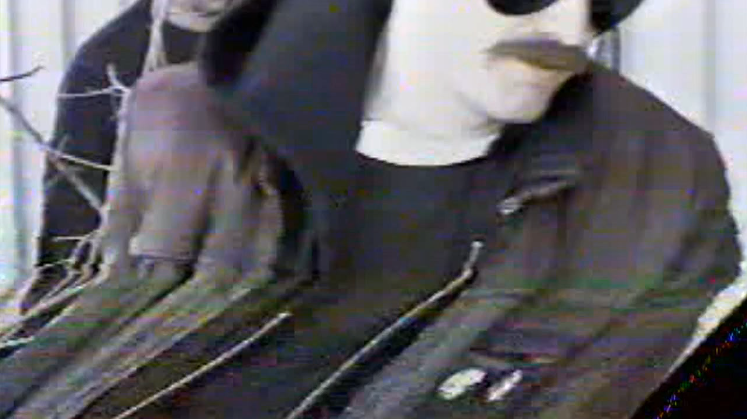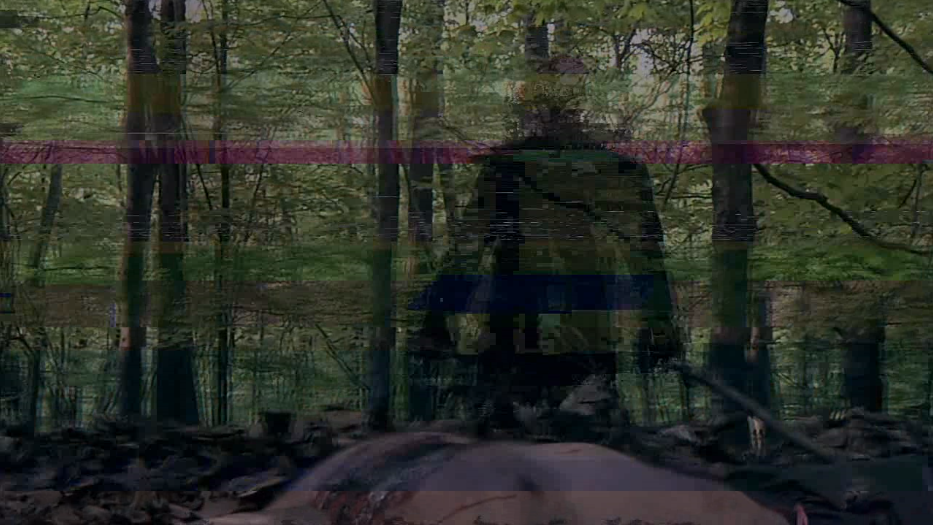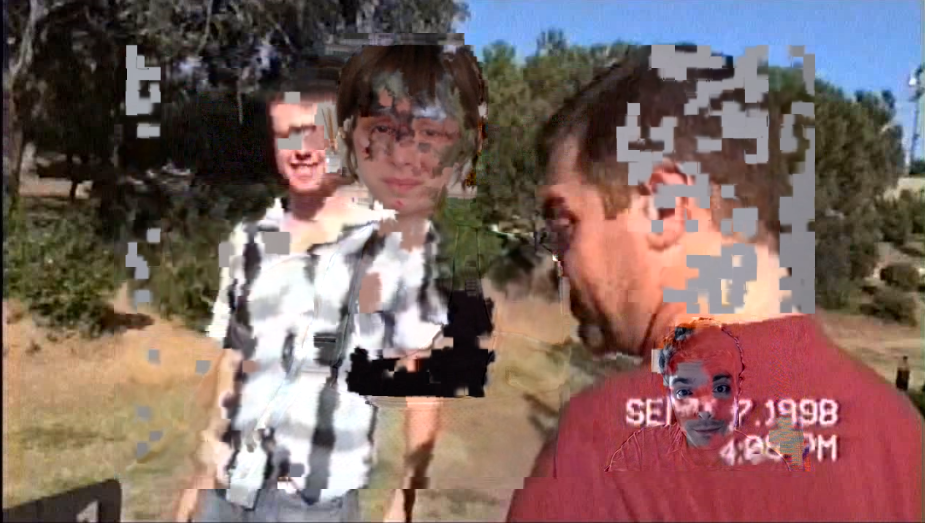VHS as Palimpsest
Ghosts of an obsolete medium
As the 90s make their inevitable loop back through the pop culture recycle bin, we find artists embracing the quirks and flaws of that decade’s media fatalities: CD-ROM, cassette, Netscape Navigator, VHS, and so on. Chillwave fetishizes the warp and warble of tape. Seapunk aestheticizes the detritus of the web’s early landscapes. Fashion reaffirms elf boots and acid wash denim. And so it goes.
Though I’ve still found cassettes useful in my own sound projects, I didn’t predict the return of VHS. Even in the 90s, when I was an avid video renter, the format was inconvenient. Rewinding was a pain. Pausing a video midstream entered an error-prone locked groove that could damage your tape with prolonged use. Tapes were bulky. Tapes were noisy. Tapes were erasable.

Despite its flaws, mass market home recording was revolutionary, like today’s ubiquitous digital cameras. Putting compact, affordable camcorders into the hands of everyday people—not just artists or production houses—brought the material residue of VHS into millions of home. My dad received his camcorder as a gift from my grandparents in the late 1980s and it was magical to capture the mundane reality of life. We have hours of unedited footage from Christmases, vacations, and high school basketball games. And along with that footage came the rituals of analog home recording: custom labels, leaving buffers of empty tape between shots, imprinting the date on the screen, popping the plastic tabs off the tape so you couldn’t overwrite it, accidentally taping over something important, and so on. Many of these quirks and trivialities I happily abandoned in the transition to digital camcorders.
V/H/S is one of the first films I’ve seen that directly engages with the materiality of its titular medium, though there are several examples of prior art. The Ring, for one, transmitted its curse through VHS dubbing. Paranormal Activity 3, an underrated gem, imaginatively reconceived its handheld premise by rewinding to the 80s. Horror is ripe for this type of media engagement. It has always granted agency and authenticity to recording technology. Specters tend to commune with tape and disk more than flesh and blood. Just ask the Ghost Hunters. Or Derrida—he thought film was a particularly haunted art.

V/H/S embraces a novel kind of retroism. Its premise is that the film itself is on VHS, assembled from a series of shorter vignettes, each hinging on a kind of obstinate materiality. The film opens with a blue screen—the ‘blank’ VHS leader—then the chunky pixels of the word ‘PLAY.’ For the next few minutes, we see snippets of car rides, amateur pornography, VHS static, and apparently random acts of vandalism. Viewers familiar to camcorders will be immediately aware that they are viewing a ‘found’ tape, one that bears traces of multiple users. Throughout the film, remainders resurface from content that was presumably taped over.

The notion of ‘taping over’ content seems preposterous in a digital context, though it has its corollaries. Metadata hangs around. Hard drives are surprisingly difficult to wipe clean. Copies of our data often proliferate unseen. But the idea that we might double-click an .avi on our desktop and inadvertently surface a video that it had previously ‘replaced’ is nonsensical—if not awesome to imagine. Our digital capture tools are designed to route around this kind of human error. If we snap a picture on our phone, it is saved to a portion of memory that won’t be accessed again unless we explicitly request it. Erasure is not tied so intimately to production as it was when we filmed with VHS. Recording to tape always ran the risk of overrunning our previous work. How many wedding videos were ruined by the husband taping the football game? How many people lent out their private sex videos to friends when they thought they had taped over them? The VHS was a video palimpsest, sedimenting the past beneath the strata of current events.

What’s fascinating about V/H/S is its willingness to explore the illogic behind reproducing a facsimile of analog media in a digital format. When ‘PLAY’ appears on screen, it demands an immediate suspension of disbelief, since we understood the unlikelihood of this illicit tape finding its way to commercial DVD release. Bergman’s Persona suffers the same media disconnect in the digital age. The famous scene where the celluloid appears to sever mid-film would have been striking in a theater, but makes little sense when reproduced on DVD.
Undaunted, V/H/S revels in the collision of digital and analog media. One vignette takes place solely through an iChat session, exploiting the potential fiction of telepresence. Another inverts the authenticity of technology witnessed in The Ring and The Grudge by menacing the viewer with a monster that apparently cannot be captured, whether by traps or by digital video. In nearly every sequence, digital special effects are fused seamlessly into the patina of the camcorder. At every turn, the media itself is the star—especially true in light of the film’s spotty acting.

If anything is lost in the move from VHS to DVD and beyond to disc-less formats, it is the sense of rupture and surprise latent in tape media. The unlabeled VHS is an unknown quantity. No poster image previews its contents. One can’t scrub it quickly with a cursor. And without proper care, one always risks erasure while recording. The fiction of trawling through someone’s hard drive does not have the same suspense as rifling through a stack of VHS tapes.
But digital media possesses its own distinctive ruptures and surprises, as I was reminded when I watched a downloaded version of V/H/S.

As I scanned the file for screen grabs in VLC, keyframe glitches blended moments of two separate vignettes. I was watching the compressed digital copy of disc media replicating a digital transcription of an analog source as it peeled its own layers, datamoshing itself into a digital representation of its tape inspiration. New ghosts of a binary kind.